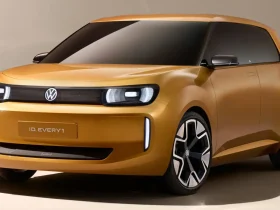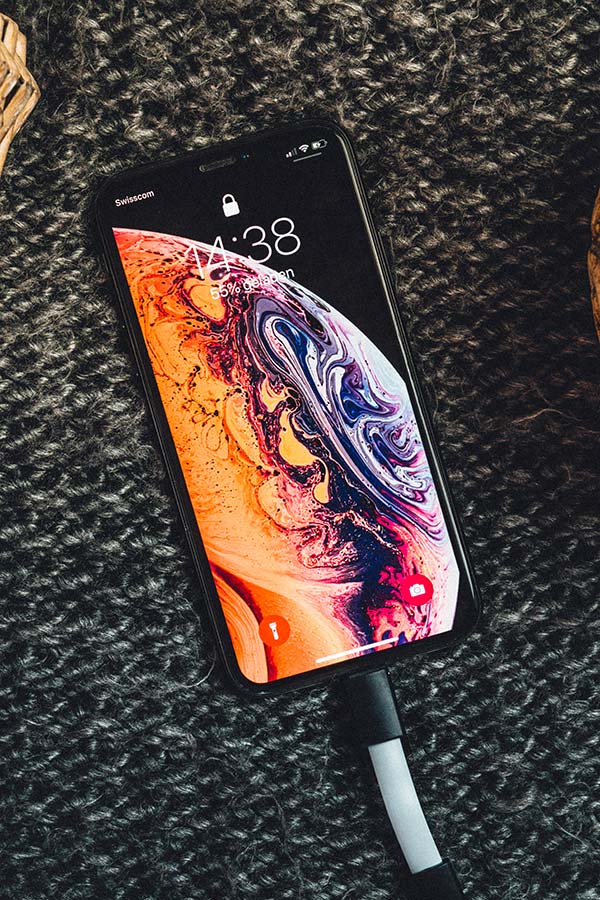The cars we love are machines designed by humans. The Pontiac Aztek, Lamborghini Miura, Citroën 2CV, and Chrysler PT Cruiser—beautiful or not—were all styled with purpose and intent. But that doesn’t mean the public embraces every new car that pushes design boundaries.
Beauty is subjective, and one person’s idea of stylish might embody another’s conception of sloppy. For Design Week, we wanted to explore the idea of automotive beauty by interviewing some of the most renowned designers in the industry from some of the world’s most recognizable brands.
Automotive designers have the tough task of predicting what customers will find attractive in years, decades. With ever-changing tastes and culture, that’s no easy task. But there are certain principles designers rely on when trying to create something beautiful, and for many, getting the proportions right is critical.

Photo by: Porsche
“It’s got to have a beautiful and balanced proportion,” says Brian Nielander, a chief designer at Stellantis who designed the Chrysler Firepower, ME Four-Twelve concepts, and others. He adds, it’s easy to “over-style things” for the sake of design. “It’s not always about the details, but more about the simplicity in proportion.”
“I think a little bit of simplicity goes a long way,” Nielander adds.

Photo by: General Motors
Former GM Vice President of Global Design, Ed Welburn (Right)
Ed Welburn, GM’s former vice president of global design who oversaw the second-generation Cadillac CTS-V, the Chevrolet SSR, the Oldsmobile Aerotech, and many others, also stressed the importance of keeping things simple.
“Complex designs may look great for the moment, but generally do not age gracefully,” says Welburn. To him, “Beautiful designs are clear and simple, but not boring.” They achieve that by being “well-proportioned in every way” while having “a consistent character of line and form.”
But Welburn admits the adage, “Beauty is in the eye of the beholder,” is true.

Photo by: General Motors
Former GM Vice President of Global Design, Ed Welburn
‘Beautiful designs are clear and simple, but not boring.’
What makes a car beautiful might be a simple question, but it’s one that Tony Hatter has “no simple answer” for. He recently retired from Style Porsche, where he was the head of design quality. Hatter served as an exterior designer at Porsche from 1986 to 2002, penning the 993 and the Carrera GT, before becoming a design manager. He now works with Ruf.
For Hatter, a car’s proportion is just one of four components that can make for an attractive vehicle. He studies how the greenhouse relates to the body, the position of the wheels, and the overhangs, which he feels are determined by the second component: Function.
Hatter accounts for the car’s aerodynamics, the position of the engine, and performance, but both proportion and function must follow his third component: Form.

Photo by: Porsche
Former Style Porsche Head of Design Quality, Tony Hatter (Middle)
“Form, however, within this aesthetic, has to have an underlying structure dictated by those first two components,” Hatter says.
“This is where innate understanding of form and competence are required, specifically how the greenhouse fits, or is integrated into the body, the way the wheel arches are treated, perhaps emphasizing the position and size of the wheels and the attention to details.”
Hatter’s final component is the materials, gauging the brightwork, color, and wheels, and how they contrast and complement the body. He also said, “The interior cannot be ignored, especially if we are talking about an open car.”

Photo by: Mazda
Former Global Advanced Design Director and Chief Designer, Tom Matano
For Tom Matano, who helped design the original Mazda MX-5 Miata and FD RX-7, a beautiful car is one that’s “void of gimmicky surfaces,” stressing that a vehicle must be, “Totally cohesive from overall proportion to the minute detail, both inside and out. By a quick glance, one should communicate what it was designed for.”
“Proportion, stance, attitude, movement, tension, center of gravity, details, and choice of materials and finishes” are what Matano looks for when determining if a car is beautiful. Matano left Mazda in 2002 to become a teacher and currently serves as Director Emeritus of the Academy of Art University’s School of Industrial Design.

Photo by: Mazda
Former Global Advanced Design Director and Chief Designer, Tom Matano
‘By a quick glance, one should communicate what it was designed for.’
Mercedes-Benz’s Head of Exterior Vehicle Design, Robert Lesnik, also emphasizes the importance of getting a car’s proportions right. “Where are the wheels? What is the stance?” he says.
Lesnik then looks at the surfaces and, lastly, the graphics. He says you’ll likely not remember what a car’s lights looked like, but you’d “remember how elegant it was when it passed by at very low speed.”

Photo by: Mercedes-Benz
Mercedes-Benz Head of Exterior Vehicle Design, Robert Lesnik
According to Frank Heyl, Bugatti’s design director, who helped design the Chiron, Divo, Bolide, and W16 Mistral, a car’s design can also do more than just look nice.
“It’s got to tell a story, number one,” says Heyl. “That’s what makes it appealing to me. It’s got to be authentic. What I’m looking at, what I’m being presented with, has got to be sure of itself. It has this purpose, and it fulfills it, and it’s sympathetic when it’s doing it because it’s authentic.”
“Number two, obviously, it’s proportion, proportion, proportion,” he says. “Before I look at any color or theme or line or intake exit, whatever it is, the thing just has to sit right.” It’s on his second look that he’ll take notice of certain features or design lines.

Photo by: Bugatti
Bugatti Head of Design, Frank Heyl
‘It’s got to tell a story, number one. That’s what makes it appealing to me. It’s got to be authentic.’
The proportion must be “just right.” He says it’s noticeable when a car doesn’t “come together, that there had been some commission there without understanding, just counting the beans, and then it has small wheels and is big and bulky, and then it doesn’t look good.”
Heyl says creating a beautiful car requires “a person with a vision and the best team to get something together that you know is an authentic contender.”

Photo by: Bugatti
Bugatti Head of Design, Frank Heyl
For BMW’s Head of Design, Adrian Van Hooydonk, industrial design is “almost at the crossroads of art and engineering.”
“We want to create products that add something to our customers’ lives,” he said. “To me, design is beautiful when it works really well, but over and beyond the functionality, it offers something that people can relate to in an emotional way.”

Photo by: BMW
Adrian Van Hooydonk (Center) & BMW Design Team
‘We want to create products that add something to our customers’ lives.’
But, Van Hooydonk is also upfront about the challenges of design. “We need to find solutions for a multitude of legal requirements, problems, and so on,” he said. “That is part of our job. That’s why we call it industrial design.”
“We try to offer products that are much more than the sum total of their functions or their solved problems, let’s say,” he added. “And we want people to be able to really relate not only on a rational level, but also on an emotional level to the product.”
—
Automotive designers balance a multitude of factors when creating a car; crash standards, cost, fuel economy targets, and more influence a vehicle’s final design. That’s why concept sketches can look so wildly different from the production version. There are rules designers can’t break because these machines balance beauty and function, and blending the two is an art.
Beauty is also influenced by time and place. Designs once derided when a car first went on sale can find popularity decades later, but that’s the beauty of beauty. It’s an opinion, and opinions change—and cars would be quite boring if they didn’t.











Leave a Reply